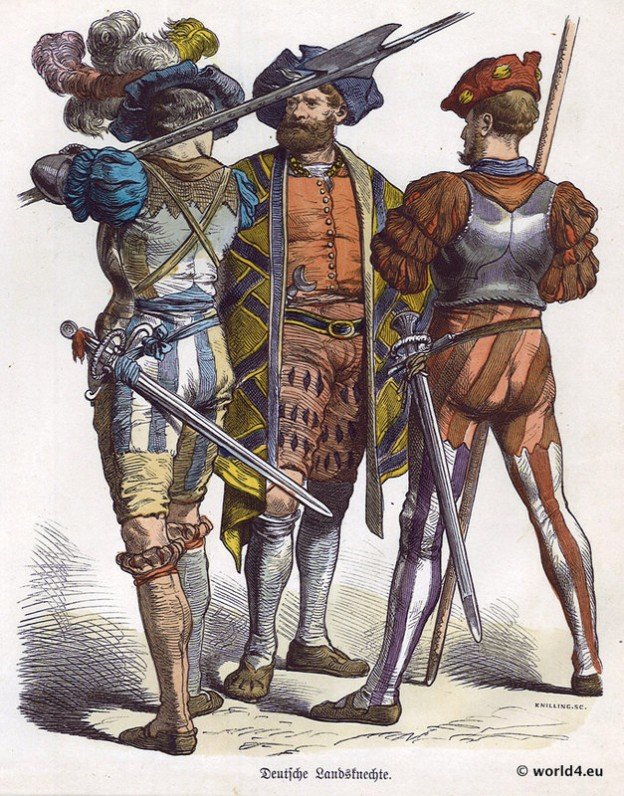The woman wears a tight-fitting bodice, furthermore the pleated Chiopa with wide cap sleeves.
Category: Europe
Fashions in Europe. European Costume and Cultural History.
French nobleman and noblewoman in court dress. 16th century.
French nobleman and noblewoman. Fashion of the late Renaissance and Spanish Baroque in the period between about 1550 and the Thirty Years War around 1620.
“La Toilette” by François Bouche, 1742.
The famous painting, “La Toilette”, in 1742 by François Boucher shows an intimate scene from everyday life of the rococo in exceptional detail.
Medieval gothic costumes. German princess and maid of honor, 1350.
The princess wears a one-piece, front buttoned dress Cotehardie called, with long tight sleeves and wide neckline (front and rear). Buttons presented at that time a novelty, instead of the lateral lacing allowed a figure-hugging dresses section.
Lansquenet. German renaissance military.
German soldiers during the time of the Renaissance and Reformation.
Blouses du style parisian. Tissages de soieries Couturier, Fructus & Descher.
MODÈLS DU STYLE PARISIAN. Le Style Parisien. Tissages de soieries Coudurier, Fructus & Descher. Paris 1916.
Cols de lingerie. French Fin de siècle fashion 1916.
COLS DE LINGERIE. MODÈLS du Le Style Parisien, 1916
German child fashion and Hair style in 1910.
German child fashion and Hair style in 1910.
German peasants c. 1530. Fashion 16th century.
German peasants. First third of the XVIth century. c. 1530. On the history of costumes.
German mountain troops with snow tyres. c. 1530. 16th century
On the history of costumes. German mountain troops with snow tyres. c. 1530. 16th century








